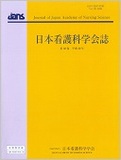Japanese
English
- 販売していません
- Abstract 文献概要
- 参考文献 Reference
- サイト内被引用 Cited by
要旨
目的:救急外来受診後30日以内の再受診例に関し,再受診の原因や経緯からパターンを見いだすことを目的とした.
方法:診療録による比較事例研究の手法で分析した.2013年2月〜12月に都内1大学病院救急外来を受診した患者のうち30日以内に再受診をした者を対象とした.事例—コードマトリックスによる分析から事例をパターン分類し,パターン別に群間比較した.
結果:136事例は,初回受診時に医師から再受診を促された【予定再受診】,帰宅後に再受診を促された【医療職者の指示による再受診】,同じ症状が悪化した【医療が必要になった再受診】,異なる症状が出現した【異なるエピソードでの再受診】,再受診の必要性が低いと思われる【軽症での再受診】の5つのパターンに分類された.
結論:本研究では,救急外来の再受診には5つのパターンがあること,初回の救急受診時に患者のパターンを把握し,それぞれに必要な支援をすることの重要性が示唆された.
Purpose: This study aimed to identify cause- and background- related 30-day revisit pattern among patients who were discharged from the emergency department (ED).
Methods: This was a chart review-based comparative case study. Data were collected from the medical charts of patients who were discharged from the ED of an university hospital in Tokyo, Japan, between February and December 2013. Patients who revisited the ED within 30 days after discharge were included. Data were analyzed using a case-code matrix for pattern classification and compared across pattern groups.
Results: We analyzed 136 patients who revisited the ED within 30 days of discharge. Patients were classified into five categories of 30-day ED revisit patterns: those who were instructed to revisit by the health care provider at the first visit (planned revisit), those who were instructed to revisit after discharge (prompted revisit), those who experienced worsening of original symptoms (revisit needed for medical treatment/examination), those who experienced new symptoms (revisit due to a new episode), and those with mild symptoms (revisit for minor problems).
Conclusion: Patients were classified into 5 ED revisit patterns. These findings indicate the necessity of assessing such patterns at the first visit and providing appropriate services to avoid unnecessary second visits.
Copyright © 2018, Japan Academy of Nursing Science. All rights reserved.


